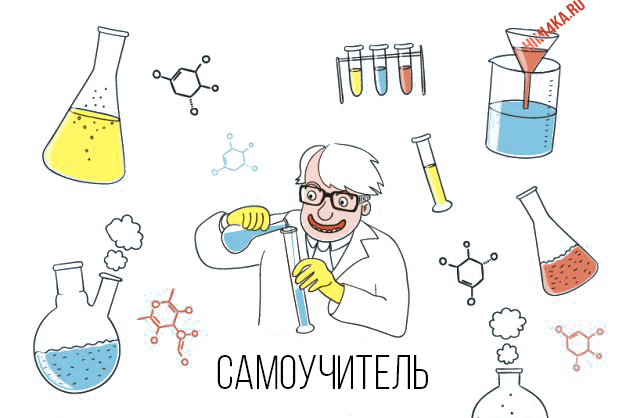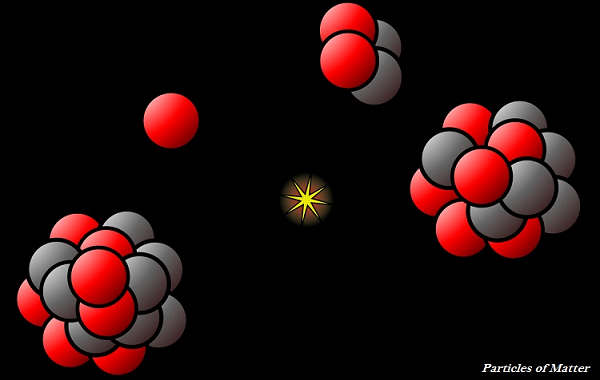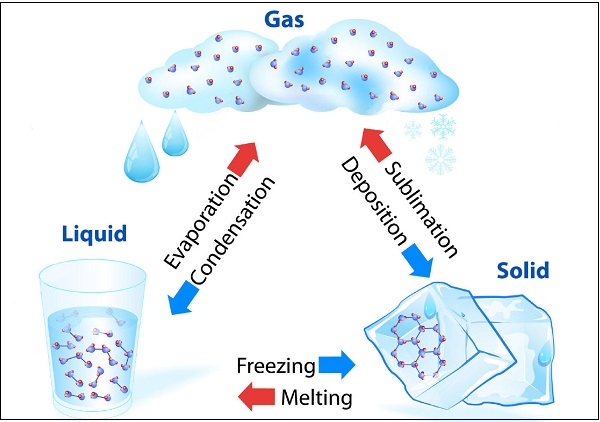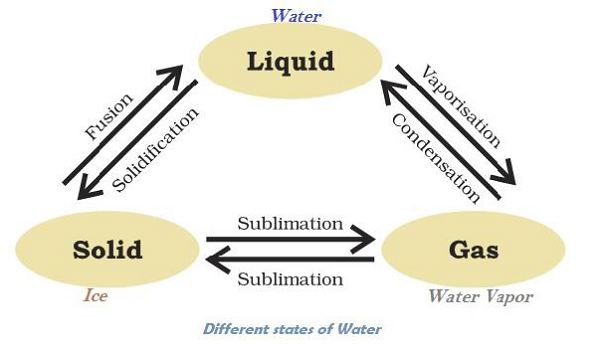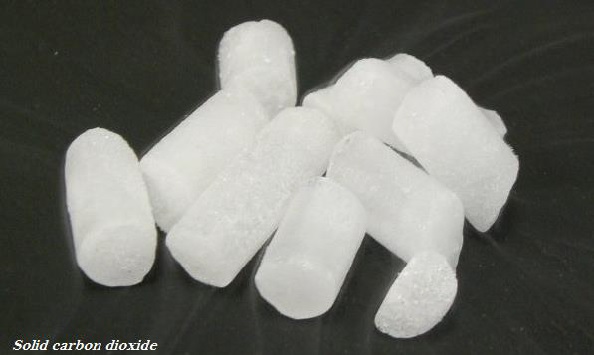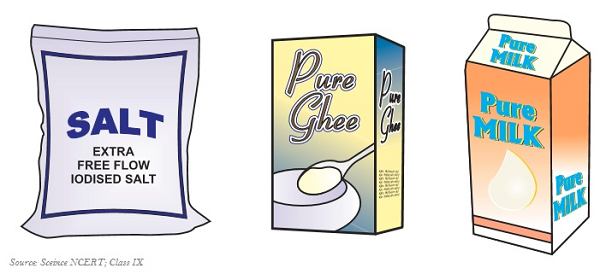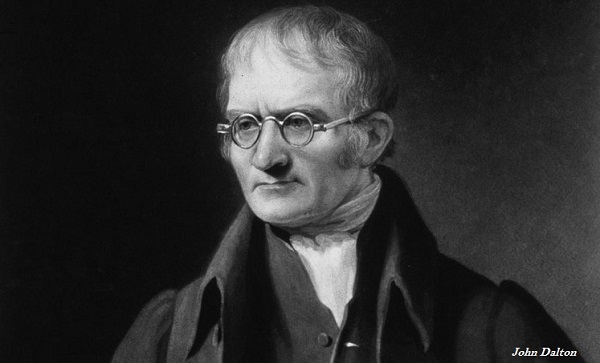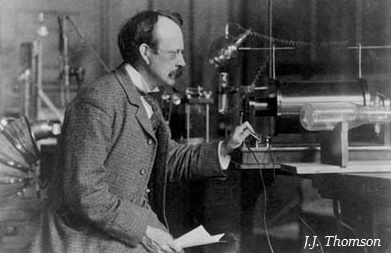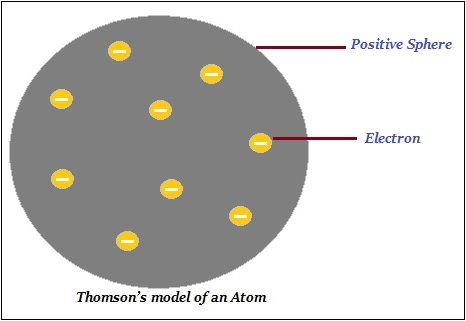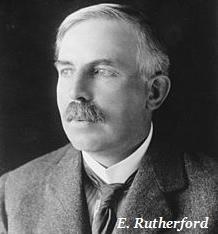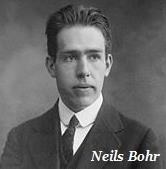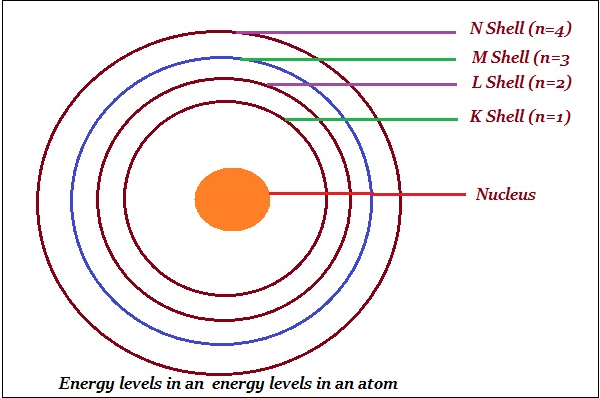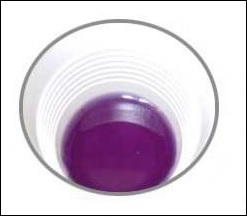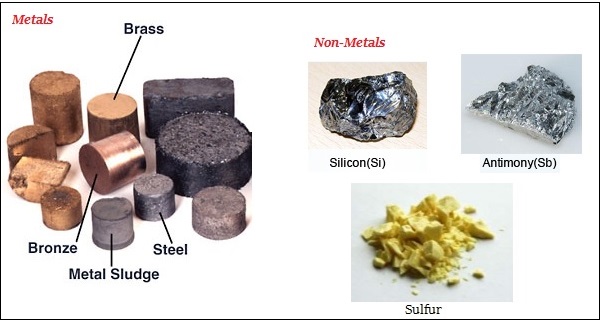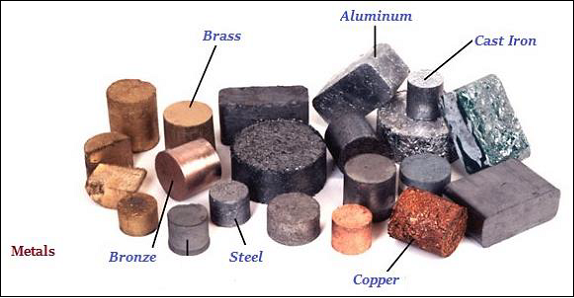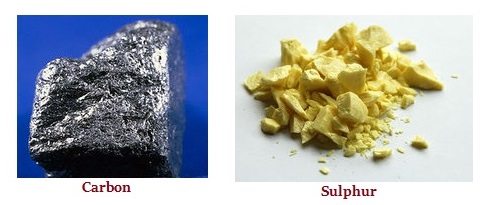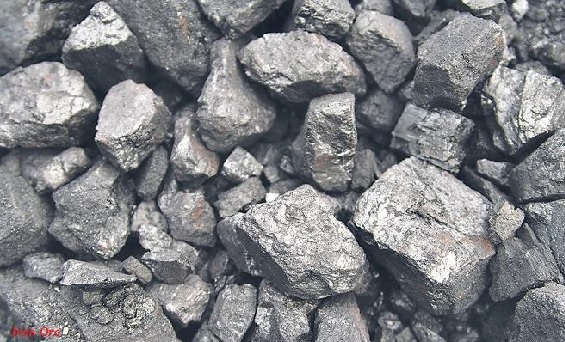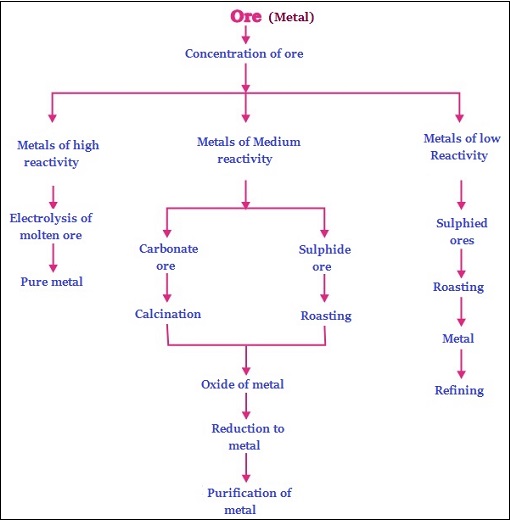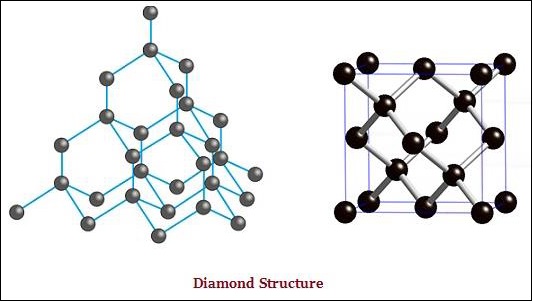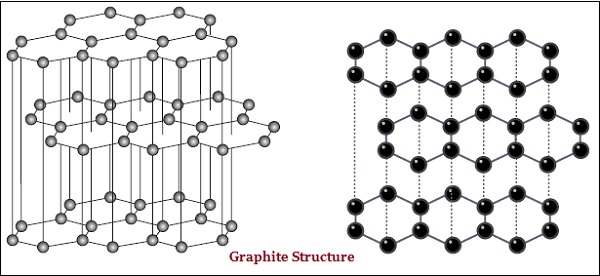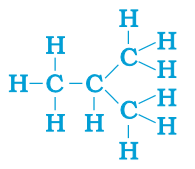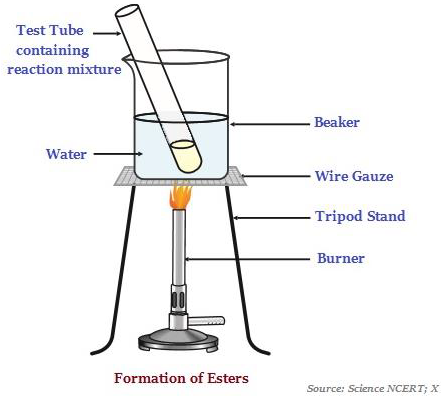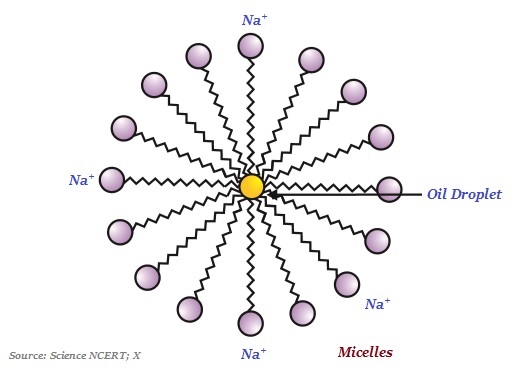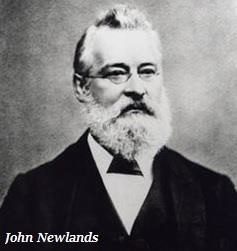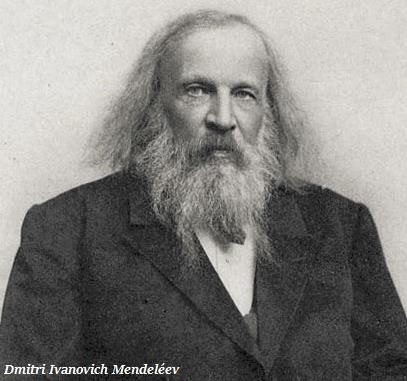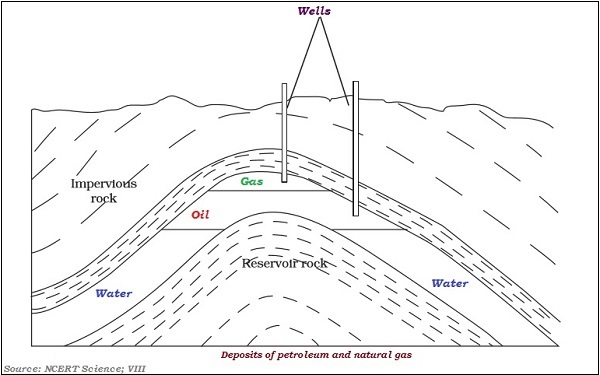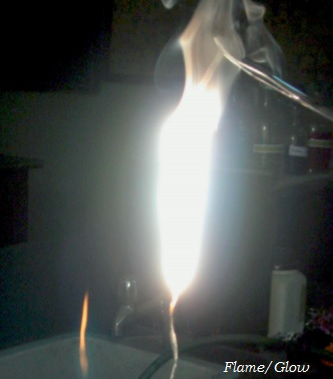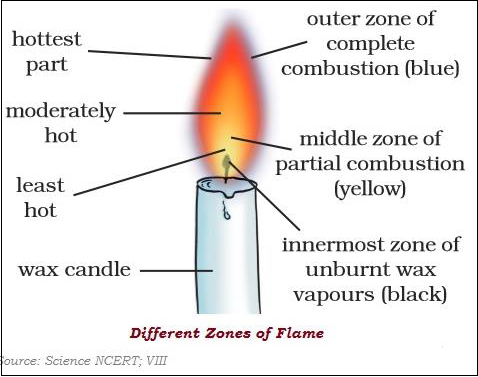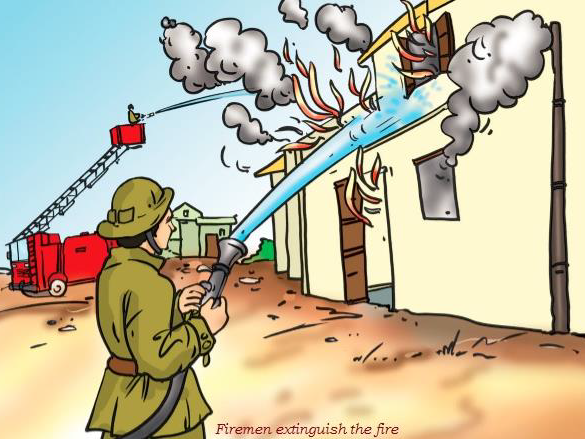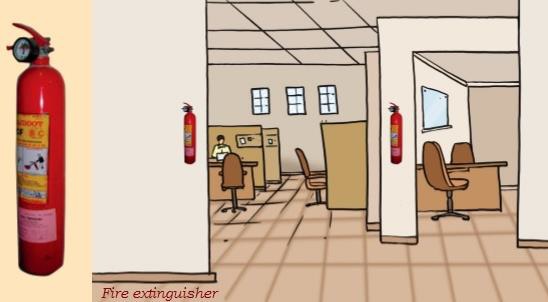САМОУЧИТЕЛЬ ПО ХИМИИ
Предлагаемый вашему вниманию Самоучитель — не обычный учебник по химии. В нём не просто излагаются какие-то факты, не просто описываются свойства веществ, как в обычном пособии. Этот курс по изучению химии объясняет и учит, особенно в тех случаях, если вы не можете или стесняетесь обратиться за разъяснениями к учителю. Данный самоучитель в виде рукописи использовался с 1991 г. школьниками, и не было ни одного ученика, который бы «провалился» на экзамене по химии и в школе, и в вузах. Большинство из них начинало с «нуля»!
Курс рассчитан на самостоятельную работу ученика. Главное, чтобы вы отвечали по ходу чтения на те вопросы, которые встречаются в тексте. Если вы не смогли ответить на вопрос, — читайте внимательнее ещё раз: все ответы имеются рядом. Желательно также выполнять все задания которые встречаются по ходу объяснения нового материала, а также задания ЕГЭ, которые взяты из реальных сборников ФИПИ разных лет издания. В этом вам помогут многочисленные обучающие алгоритмы, которые есть в каждой части Самоучителя по химии.
В интерактивном учебнике приведены, в основном, схемы химических реакций. Коэффициенты нужно расставлять самим, даже если об этом не сказано в задании. В конце каждого урока имеются упражнения, вопросы и задачи, которые проверяют степень усвоения предложенного материала. Если вы смогли, не подглядывая в текст урока, ответить на эти вопросы, сделать все упражнения, решить все задачи — замечательно. В противном случае ещё раз перечитайте урок.
В последних уроках самоучителя приведены также способы решения базовых задач по химии. В случае затруднений при решении задачи, условие которой имеется в конце главы, найдите эту задачу среди задач для самостоятельного решения в уроках 29–32, а потом посмотрите, как решается такая задача.
Изучив данный Самоучитель, вы сможете легко ответить на многие вопросы ЕГЭ и просто понять и, возможно, полюбить этот непростой, но очень интересный предмет ХИМИЯ.
Если ты готов, то дерзай! И да прибудет с тобой химия 🙂
Chemistry — Matter In Our Surroundings
Introduction
-
Everything found in this universe is made up of some materials, scientists have named them as “matter.” For example, the food we eat, the air we breathe, stones, clouds, stars, plants, animals, water, dust, everything is categorized as matter.
Characteristics of Particles of Matter
-
Particles of matter are very small, normally, not visible from naked eye.
-
Particles of matter keep moving continuously, which is known as the “kinetic energy.”
-
Kinetic energy of particles directly depends on the temperature, as temperature increases, the speed of the movement also increases.
-
The particles of matter have attracting force; therefore, they attract each other.
-
The attracting force of the particles keeps the particles together; however, the strength of the attracting force varies from one kind of matter to another.
States of Matter
-
Matter has three following states −
-
Solid State
-
Liquid State
-
Gaseous State
-
Let’s discuss them in brief −
Solid State
-
All the solid materials have a definite shape, distinct boundaries, and fixed volumes.
-
Most of the solid materials have negligible compressibility.
-
All the solid materials have a natural tendency to maintain their shape when subjected to outside force.
-
The solid materials can be broken under applied force, but it is very difficult to change their shape, as they are rigid.
Liquid State
-
Unlike solids, liquids have no fixed shape; however, they have a fixed volume.
-
Liquids take up the shape of the container in which they are kept.
-
Liquids have the property to flow and change shape.
Gaseous State
-
Matter in the form of air, which is neither solid nor liquid, is known as gas. For example, oxygen, nitrogen, hydrogen, etc.
-
Unlike solid, gas has not definite size and shape.
-
The gases, such as liquefied petroleum gas (LPG – used in cooking); compressed natural gas (CNG – used as fuel in vehicles), etc. have high compressibility; therefore, large volume of a gas can be compressed into a small cylinder and can be transported easily.
-
Gases, normally, show the property of diffusing very fast into other gases. This is the reason that we can smell (either good or bad) from the distance.
Matter Can Change its State
-
Water can exist in all three states, e.g. Ice as solid; water (H2O) as liquid; and water vapor as gas. The following diagram illustrates the transformation of water in different states −
-
The temperature, at which solid melt and transform into the liquid (at the given atmospheric pressure), is known as “melting point.”
-
The melting point of a solid is an indication of the strength of the force of attraction between its particles.
-
The melting point of ice is 273.16 K, i.e. 00 C.
-
The process of melting (i.e. change of solid state into liquid state) is known as fusion.
-
The amount of heat energy, which is required to change 1 kg of a solid materials into liquid materials at a given atmospheric pressure, is known as the latent heat of fusion.
-
The temperature at which a liquid starts boiling at the given atmospheric pressure is known as “boiling point.”
-
The boiling point of water is 373 K i.e. 1000C.
-
A change of state of a matter directly from solid to gas without changing into liquid state (or vice versa) is known as “sublimation.”
-
The phenomenon i.e. change of a liquid into vapors at any temperature below its boiling point is known as “evaporation.”
-
Solid carbon dioxide (CO2) is stored under high pressure.
-
Solid CO2 gets converted directly into gaseous state once the pressure decreases to 1 atmosphere.
-
Atmosphere (atm) is a unit of measuring pressure exerted by the gas and the unit of pressure is Pascal (Pa); 1 atmosphere = 1.01 × 105 Pa.
The Fourth State of Matter
-
Plasma is the state that consists of super energetic and super excited particles.
-
The super excited particles are found in the form of ionized gases. E.g. the fluorescent tube (which contains helium gas) and neon sign bulbs (which contain neon gas) consist of plasma.
Chemistry — Is Matter Around Us Pure
Introduction
-
A pure substance is that that consists of single type of particle or particles.
-
Mixtures of two or more pure components without any undesirable substance are known as Mixtures, for example, water, minerals, soil etc.
-
A homogeneous mixture of two or more substances is known as solution. For example, lemonade, soda water etc.
-
Solution could be in any form such as – it could be in liquid, solid, or gaseous.
-
Alloys are another example of mixture that contain homogeneous mixtures of metals; they cannot be separated into their components by physical methods. E.g. For example, brass is a mixture of zinc (approximately 30%) and copper (about 70%).
Significant Features of Solution
-
Solution is normally a homogeneous mixture.
-
The particles of a solution are even smaller than 1 nm (10-9 meter) in diameter and hence, these are not visible from the naked eyes.
-
The path of light is not visible in a solution.
-
The dissolved particles cannot be separated from the mixture by the simple process of filtration.
-
The dissolved particles do not settle down when it left undisturbed.
-
At a given temperature, when no more solute can be dissolved in a solution, it is known as ‘saturated solution.’
-
At a given temperature, the amount of the dissolved particles present in the saturated solution, is known as solubility.’
Suspension
-
A suspension is a heterogeneous mixture in which the solute particles do not dissolve, but rather remain suspended throughout the bulk of the medium, is known as ‘suspension.’
Significant features of Suspension
-
Particles of a suspension are clearly visible from the naked eye.
-
The particles of a suspension scatter a beam of light that passes through it and likewise, its path is visible.
-
The salute particles can be separated from the mixture by the simple process of filtration.
Colloid
-
A heterogeneous mixture is known as ‘colloid.’ E.g. mist, fog, smoke, face cream, etc.
-
The size of colloid particles is too small to see from the naked eye.
-
Colloid particles are big enough to scatter a beam of light passing through it and make the path visible.
-
Colloid particles cannot be separated from the mixture by the simple process of filtration.
-
The special filtration technique i.e. centrifugation, can be used to separate the colloidal particles.
Chromatography
-
The process of separation of components of a mixture is called as chromatography; normally it is used for the color separation.
-
Chromatography technique is used for separation of those solutes that dissolve in the same solvent.
Distillation
-
The process of purifying a liquid by heating and cooling means is known as distillation.
Crystallization
-
The process that separates a pure solid in the form of its crystals from a solution is known as ‘crystallization.’
Elements
-
In 1661, Robert Boyle was the first scientist who used the term element; Antoine Laurent Lavoisier, a French chemist, was the first who experimentally define the term element.
-
Element is as a basic form of matter that cannot be broken down into simpler substances by a chemical reaction.
-
Elements normally can be categorized as metals, non-metals, and metalloids.
Metal
-
A solid material, which typically is hard, ductile, malleable, shiny, and fusible with good electrical and thermal conductivity, is known as metal. E.g. gold, silver, copper, aluminum, etc.
-
Mercury is the only metal that remains liquid at room temperature.
Non-metal
-
All elements or substances, which are not metals, are known as non-metals. E.g. hydrogen, oxygen, iodine, carbon, etc.
-
Non-metals have variety of colors and they are poor conductors of heat and electricity.
-
Non-metals are not lustrous, sonorous, or malleable.
Compound
-
A substance, composed of two or more elements, is known as ‘compound.’
-
Compound is the result of the chemically combination of two or more elements in a fixed proportion.
-
Properties of a compound are somehow different from its constituent elements, whereas, the properties of a mixture are the same as of its constituting elements or compounds.
Chemistry — Atoms & Molecules
Introduction
-
Around 500 BC, an Indian Philosopher Maharishi Kanad, first time postulated the concept of indivisible part of matter and named it ‘pramanu.’
-
In 1808, John Dalton used the term ‘atom’ and postulated the atomic theory to the study of matter.
Dalton’s Atomic Theory
-
According to Dalton’s atomic theory, all matter, whether an element, a compound or a mixture is composed of small particles called atoms.
-
According to Dalton’s atomic theory, all matters, whether they are elements, compounds, or mixtures, are composed of small particles known as atoms.
Salient features of Dalton’s Atomic Theory
-
All matter is made of very miniscule particles known as atoms.
-
Atom is an indivisible particle, which cannot be created or destroyed through chemical reaction.
-
All atoms of an element are identical in mass and chemical properties whereas, atoms of different elements have different masses and chemical properties.
-
To form a compound, atoms are combined in the ratio of small whole numbers.
-
In a given compound, the relative number and kinds of atoms are constant.
Atomic Mass
-
The mass of an atom of a chemical element; it is expressed in atomic mass units (symbol is u).
-
The atomic mass is roughly equivalent to the number of protons and neutrons present in the atom.
-
One atomic mass unit is a mass unit equal to the exactly one-twelfth (1/12th) the mass of one atom of carbon-12 and the relative atomic masses of all elements have been calculated with respect to an atom of carbon-12.
Molecule
-
The smallest particle of an element or a compound, which is capable to exist independently and shows all the properties of the respective substance.
-
A molecule, normally, is a group of two or more atoms which are chemically bonded together.
-
Atoms of the same element or of different elements can join (with chemical bond) together to form molecules.
-
The number of atoms that constitute a molecule is known as its atomicity.
Ion
-
A charged particle is known as ion; it could be either negative charge or positive charge.
-
The positively charged ion is known as a ‘cation’.
-
The negatively charged ion is known as an ‘anion.’
Chemical Formulae
-
A chemical formula of a compound demonstrations its constituent elements and the number of atoms of each combining element.
-
The chemical formula of a compound is the symbolic representation of its Composition.
-
The combining capacity of an element is known as its ‘valency.’
Molecular Mass
-
The molecular mass of a substance is calculated by taking the sum of the atomic masses of all the atoms in a molecule of respective substance. For example, the molecular mass of water is calculated as −
-
Atomic mass of hydrogen = 1u
-
Atomic mass of oxygen = 16 u
-
The water contains two atoms of hydrogen and one atom of oxygen.
-
Molecular Mass of Water is = 2 × 1+ 1×16 = 18 u (u is the symbol of molecular mass).
Formula Unit Mass
-
The formula unit mass of a substance is calculated by taking the sum of the atomic masses of all atoms in a formula unit of a compound.
Avogadro Constant or Avogadro Number
-
Avogadro was an Italian scientist who had given the concept of Avogadro Number (also known as Avogadro Constant).
-
The number of particles (atoms, molecules, or ions) present in 1 mole of any substance is fixed, and its value always calculated as 6.022 × 1023.
-
In 1896, Wilhelm Ostwald had introduced the concept of ‘mole;’ however, mole unit was accepted to provide a simple way of reporting a large number in 1967.
Law of Conservation of Mass
-
During a chemical reaction, sum of the masses of the reactants and products remains unchanged, which is known as the ‘Law of Conservation of Mass.’
Law of Definite Proportions
-
In a pure chemical compound, its elements are always present in a definite proportion by mass, which is known as the ‘Law of Definite Proportions.’
Chemistry — Structure of the Atom
Introduction
-
By 1900, it was discovered that the atom was not a simple, indivisible particle, but rather it contains sub-atomic particles.
-
J.J. Thomson discovered the sub-atomic particle namely ‘electron.’
-
J.J. Thomson was the first person who proposed a model for the structure of an atom.
-
In 1886, E. Goldstein discovered the presence of new radiations in a gas discharge and named them canal rays.
-
Another positively charged sub-atomic particle was discovered with experiments of canal rays and named it proton.
Thomson’s Model of Atom
-
Thomson proposed that an atom consists of a positively charged sphere and the electrons (negative charge) are embedded in it (as shown in the image given below).
-
Further, Thomson said that the negative and positive charges are equal in magnitude. Thus, the atom as a whole is electrically neutral.
Rutherford’s Model of Atom
-
E. Rutherford is popular as the ‘Father’ of nuclear physics.
-
Rutherford is largely known for his work on radioactivity and the discovery of the nucleus of an atom with the gold foil experiment (as shown in the image given below.
-
Rutherford said that in an atom, there is a positively charged center known as the nucleus.
-
Rutherford said that nearly all the mass of an atom exists in in the nucleus.
-
According to Rutherford, the electrons revolve around the nucleus in well-defined orbits.
Bohr’s Model of Atom
-
Neils Bohr further extended Rutherford’s model and improved his drawbacks.
-
According to Bohr, only certain special orbits known as discrete orbits of electrons, are allowed inside the atom.
-
Bohr said that electrons do not radiate energy while revolving in discrete orbits.
-
Bohr named orbits or shells as energy levels (as shown in the image given below).
-
Bohr represented these orbits or shells are by the letters K, L, M, N,… or the numbers, n = 1,2,3,4,….
Neutron
-
In 1932, J. Chadwick discovered a new sub-atomic particle i.e. neutron.
-
Neutron has no charge and a mass nearly equal to that of a proton.
-
Neutrons are present in the nucleus of all atoms, except hydrogen.
Electrons Distributed in Different Orbits (Shells)
-
The maximum number of electrons that can be present in a shell is given by the formula 2n2.
-
‘n’ is the orbit number or energy level index, i.e. 1, 2, 3,….
-
According to the given formula −
-
First orbit i.e. K-shell will be = 2 × 12 = 2
-
Second orbit i.e. L-shell will be = 2 × 22 = 8
-
Third orbit i.e. M-shell will be = 2 × 32 = 18
-
Fourth orbit i.e. N-shell will be = 2 × 42 = 32
-
Likewise, the maximum number of electrons that can be accommodated in the outermost orbit is 8.
-
Electrons are not filled in a given shell, unless the inner shells are filled. It means, the shells are filled in a step-wise manner; starting from inner shell to outer shell.
Valence
-
The electrons, those are present in the outermost shell of an atom, are known as the valence electrons.
-
According to Bohr-Bury model, the outermost shell of an atom can have a maximum of 8 electrons.
Atomic Number
-
The total number of protons, present in the nucleus of an atom, is known as atomic number.
-
The number of protons of an atom determines the atomic number.
-
Atomic number is denoted by ‘Z’.
-
Protons and neutrons collectively are known as nucleons.
Mass Number
-
The sum of the total number of protons and neutrons, present in the nucleus of an atom, is known as mass number.
Isotopes
-
The atoms of the same element, having the same atomic number but different mass numbers, is known as isotopes. E.g. Hydrogen atom has three isotopes namely protium, deuterium, and tritium.
-
The chemical properties of isotopes of an atom are similar but their physical properties are different.
Isobars
-
Atoms of different elements with different atomic numbers, which have the same mass number, are known as isobars. E.g. calcium’s atomic number is 20and argon’s atomic number is 18; further, the number of electrons in these atoms is different, but the mass number of both these elements is 40.
Chemistry — Chemical Reactions & Equations
Introduction
-
A process in which one or more chemical substances react with other chemical substance and converted to one or more different substances is known as chemical reaction.
Chemical Equation
-
A chemical equation is the symbolic demonstration of a chemical reaction; it is represented through symbols and formulae. E.g.
Magnesium + Oxygen = Magnesium Oxide
Mg + O2 = MgO
-
The substances magnesium and oxygen are known as reactants and the result of reaction, i.e., magnesium oxide is known as product.
-
Remember, the total mass of the elements present in the products of a chemical reaction has to be equal to the total mass of the elements present in the reactants.
-
The number of atoms of each element always remains same, before and after the chemical reaction.
Types of Chemical Reaction
-
Following are the major types of chemical reaction −
-
Combination Reaction
-
Decomposition Reaction
-
Displacement Reaction
-
Let’s discuss each of them in brief −
Combination Reaction
-
When two or more substances (i.e. elements or compounds) react to form a single product, such reaction is known as combination reaction. E.g.
CaO(s) +H2O(1)→Ca(OH)2(aq)
(Quick lime) (Slaked lime)
-
As illustrated in the above reaction, calcium oxide and water reacted (or combined) to form a single product, known as calcium hydroxide.
-
The chemical reaction in which heat is also released along with the formation of product is known as exothermic chemical reactions.
Decomposition Reaction
-
The reaction, in which a single reactant breaks down into simpler products, is known as a decomposition reaction. E.g.
-
In the above given reaction, Ferrous sulphate crystals (i.e. FeSO4, 7H2O), when heated, it loses water and the color of the crystals changes. Finally, it decomposes into ferric oxide (Fe2O3), sulphur dioxide (SO2) and sulphur trioxide (SO3).
Displacement Reaction
-
The reaction, in which an element displaces or removes another element, is known as displacement reaction. E.g.
Fe(s)+ CuSO4(aq)→FeSO4(aq)+Cu(s)
(Copper sulphate)(Iron sulphate)
-
In the above given reaction, iron displaced copper from copper sulphate solution and forms Iron sulphate.
Oxidation and Reduction
-
If a substance gains oxygen during a reaction, it is known as oxidation. On the other hand, in a reaction, if a substance loses oxygen, it is known as reduction. E.g.
-
In the above given reaction, the copper oxide loses oxygen and hence reduced (i.e. reduction); on the other hand, hydrogen gains oxygen and hence oxidized (i.e. oxidation).
Corrosion
-
When a metal is attacked by substances found in the immediate environment, such as moisture, acids, etc., it is known as corrosion. E.g. the black coating on silver, the green coating on copper, etc.,
Rancidity
-
When fats and oils are getting oxidized, the process is known as rancidity. Their smell, taste, color, etc. also change; likewise, it made food unsafe for consumption.
Chemistry — Acids, Bases, and Salts
Introduction
-
We taste food sour and bitter, it is only because of presence of acids and bases respectively.
Litmus Solution
-
Litmus, which is extracted from lichen, has purple color (see the image given below), but the condition is when it is neither acidic nor basic, i.e. neutral.
-
Litmus basically is a plant belongs to Thallophyta, and in chemical experiment, it is commonly used as an indicator.
-
The substances, which odor changes in acidic or basic media, are known as olfactory indicators.
Acid or Base in a Water Solution
-
The hydrogen ions in HCl are produced because of the presence of water. Secondly, the separation of H+ ion from the HCl molecules cannot be done in the absence of water. The chemical formula is illustrated below
HCl + H2O → H3O+ + Cl–
-
Furthermore, hydrogen ions cannot exist alone, but they can exist in presence of water molecules. Therefore, hydrogen ions are shown as H+(aq) or hydronium ion (H3O+). The chemical formula is −
H+ + H2O → H3O+
-
The bases which are soluble in water are known as alkalis. But all bases are not soluble in water.
-
If water is added to a concentrated acid, then the heat is generated.
-
Mixing an acid or base with the water results into decrease in the concentration of ions (i.e. H3O+/OH–) per unit volume and the process is known as dilution.
pH Scale
-
A scale, used in measuring the hydrogen ion concentration in a solution, is known as pH scale.
-
The ‘p’ in pH stands for ‘potenz’, it is a German term, which means ‘power’.
-
pH value is taken simply as a number, which indicates the acidic or basic nature of a solution. So, if the concentration of hydronium ion is higher, then the value of pH would be lower.
-
The value of pH scale ranges between ‘0’ and ’14;’ so, if pH value is measured ‘0,’ it means – it is very acidic and if it is 14, then it means – it very alkaline.
-
The neutral value of pH scale is ‘7’.
-
On a pH scale, values less than 7 represent an acidic solution and values greater than 7 represent a basic solution.
-
Usually, paper impregnated with the common indicator is used for measuring the pH (see the image given below)−
-
Likewise, the strength of acids and bases substance mainly depends on the number of H+ ions and OH– ions produced, respectively.
-
The following image roughly illustrates (variations in color) the pH value of some of the common substances −
Importance of pH in Everyday Life
-
The pH value of a human body ranges between 7.0 and 7.8.
-
The stomach of a human body produces hydrochloric acid that helps in the digestion of food; surprisingly, it does not harm the stomach anyway.
-
However, when the stomach produces too much acid (known as indigestion), it causes pain and irritation. To get relief from this pain, doctors suggest the use of bases known as antacids.
-
These antacids neutralize and control the increased amount of acid.
-
The teeth, which are made up of calcium phosphate, is the hardest substance in the body. However, when the pH in the mouth decreases (below 5.5), it corrodes the teeth.
-
The salt, normally, is formed by the combination of hydrochloric acid and sodium hydroxide solution; and, the combination is known as sodium chloride.
-
When the pH value of rain water is measured as less than 5.6, it is known as acid rain.
-
When acid rain flows into the rivers, then it also lowers the pH of the river water
-
The acidic river water is threat for the survival of aquatic life.
Bleaching Powder
-
Bleaching powder is produced by the action of chlorine on dry slaked lime [Ca(OH)2] and it is represented as CaOCl2.
-
Bleaching powder is normally used in textile industry, paper factory, chemical industry, and disinfecting the drinking water.
Baking Soda
-
The baking soda is commonly used in the kitchen in order to cook tasty crispy food items. It also cooks some food items faster.
-
The chemical name of baking soda is sodium hydrogencarbonate and formula is NaHCO3.
Washing Soda
-
Recrystallization of sodium carbonate results into washing soda.
-
The chemical formula of washing soda is Na2CO3.10H2O.
-
Washing soda is commonly used in glass, soap, and paper industries.
Plaster of Paris
-
Plaster of Paris is a white powder that doctors use as plaster for supporting fractured bones.
-
The chemical name of plaster of paris is calcium sulphate hemihydrate and chemical formula is 2CaSO4.H2O.
Materials: Metals and Non-Metals 1
Introduction
-
The metals can be distinguished from the non-metals on the basis of their chemical and physical properties.
-
The property of metals by which they can be beaten into thin sheets is known as malleability.
-
The property of metal by which it can be drawn into wires is known as ductility.
-
The metals are normally hard, malleable, lustrous, ductile, sonorous, and good conductors of heat and electricity. E.g. iron, copper, calcium, aluminum, magnesium, etc.
-
The materials, which are not sonorous and are poor conductors of heat and electricity, are known as non-metals. E.g. sulphur, carbon, oxygen, phosphorus, etc.
-
Some metals, such as sodium and potassium are soft and can be cut with a knife.
-
Mercury is the only metal, which remains in liquid state at room temperature.
-
When sulphur dioxide is dissolved in water, sulphurous acid is formed. Illustration — Sulphur dioxide (SO2) + Water (H2O) → Sulphurous acid (H2SO3).
-
Oxides of non-metals are acidic in nature.
-
The sulphurous acid changes blue litmus paper red.
-
Phosphorus is a very reactive non-metal and it catches fire whenever exposed to air.
-
To prevent the contact of phosphorus with atmospheric oxygen, Phosphorus is stored in water.
-
On burning, metals easily react with oxygen and produce metal oxides, these are basic in nature.
-
Non-metals react with oxygen and produce non- metallic oxides; these are acidic in nature.
-
Some metals react with water and produce metal hydroxides and hydrogen gas.
-
Nonmetals normally do not react with water.
-
Metals also react with acids and produce hydrogen gas and metal salts.
-
Non-metals normally do not react with acids.
Uses of Metals and Nonmetals
-
Metals are used in making machinery, airplanes, automobiles, trains, satellites, industrial gadgets, cooking utensils, water boilers, etc.
-
Non-metals are used in fertilizers to improve the growth of plants.
-
Non-metal are used in water purification.
-
Non-metals are used in crackers.
Chemistry — Metals and Non-Metals 2
Introduction
-
A solid material, which is typically hard, malleable, shiny, fusible, and ductile, is known as metals. E.g. iron, copper, aluminum, magnesium, sodium, lead, zinc, etc.
-
Normally, metals have good electrical and thermal conductivity.
-
Metals, in their pure state, have a shining surface, known as metallic luster.
-
Metals can be beaten into thin sheets; this property is known as malleability.
-
The property of metals to be drawn into the thin wires is known as ductility. E.g. gold is the most ductile metal.
-
Silver and copper are the best heat conductor.
Non-Metals
-
The non-metals are normally found in either solids or gases states. However, bromine is an exception that found in liquid state.
-
Some of the major examples of non-metals are carbon, sulphur, iodine, oxygen, hydrogen, etc.
Facts of Metals and Non-metals
-
All metals exist in the solid form at room temperature, except mercury.
-
Gallium and caesium have very low melting points; these two metals get melt even on palm.
-
Iodine is a non-metal, but it is lustrous (lustrous is the property of metal).
-
Carbon is a non-metal that can exist in different forms. Each form is called an allotrope.
-
Diamond is an allotrope of carbon and it is the hardest natural substance known.
-
The melting and boiling point of diamond is very high.
-
Graphite is also allotrope of carbon; it is a conductor of electricity.
-
Alkali metals, such as lithium, potassium, sodium, are the examples of soft metals, as they can be cut with a knife.
-
Nearly all metals when combined with oxygen, it forms metal oxides.
-
Different metals have different frequency of reaction; some react slow, but some react very fast. E.g. potassium and sodium are very reactive and they catch fire only if kept in the open.
-
Therefore, potassium and sodium are kept immersed in kerosene oil so that they cannot catch fire.
-
However, among all metals, sodium (most likely), is the most reactive metal.
-
Anodizing is a process of forming a thick protective oxide layer of aluminum and it protects from corrosion.
-
The elements or compounds that occur naturally in the crust (upper layer) of the earth, are known as minerals.
-
The minerals in raw form is known as ores. E.g. gold, silver, iron etc. (iron ore shown in the image given below) −
-
The ores, which are extracted from the earth, are usually contaminated with large amounts of impurities such as mix with some elements, soil, sand, etc., known as ‘gangue’.
-
Based on the reactive nature and extraction from the ores, metals can be categorized as −
Chemistry — Carbon and its Compounds
Introduction
-
Carbon plays very important roles for all living beings.
-
The amount of carbon in the earth’s crust is merely 0.02%, which is available in the form of minerals such as carbonates, hydrogen-carbonates, coal, and petroleum.
-
The presence of carbon in the atmosphere of the earth is 0.03%, in the form of carbon dioxide.
Compounds of Carbon
-
Almost all carbon compounds (except a few) are poor conductors of the electricity.
-
The diamond and graphite both are formed by carbon atoms; however, the difference lies between them in the manner in which the carbon atoms are bonded to one another.
-
In diamond, each atom of the carbon, is bonded to four other carbon atoms and form a rigid three-dimensional structure (see the image given below).
-
In graphite, each atom of the carbon, is bonded to three other carbon atoms in the same plane, which gives a hexagonal array (see the image given below) −
-
There is also difference in some physical structure of diamond and graphite.
-
Diamond is the hardest substance known whereas graphite is smooth and slippery substance.
-
Graphite is good conductor of electricity whereas diamond is not.
-
Following table illustrates the structures of compounds of carbon and hydrogen −
| Name | Formula | Structure |
|---|---|---|
| Methane | CH4 | 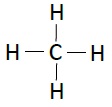 |
| Ethane | C2H6 | 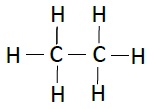 |
| Propane | C3H8 | 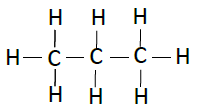 |
| Butane | C4H10 |  |
| Pentane | C5H12 |  |
| Hexane | C6H14 |  |
-
The compounds, which has identical molecular formula, but different structures, are known as structural isomers (see the structure Butane given below).
-
The saturated hydrocarbons are known as alkanes.
-
The unsaturated hydrocarbons, which comprise of one or more double bonds, are known as alkenes.
-
The unsaturated hydrocarbons, which comprise of one or more triple bonds, are known as alkynes.
Use of Alcohol as Fuel
-
Sugarcane plants very efficient convert sunlight into chemical energy and its juice can be used to prepare molasses.
-
When molasses is fermented, it produces alcohol (ethanol).
-
Some of the countries now using alcohol as an additive in petrol, as it is a cleaner fuel.
-
These alcohol, on burning in sufficient air (oxygen), gives rise to only carbon dioxide and water.
Esters
-
Esters are sweet-smelling substances, which are most commonly formed by reaction of an acid and an alcohol (see the image below – illustrating the formation of esters).
-
When esters react in the presence of an acid or a base, it gives back the alcohol and carboxylic acid.
-
The reaction of esters with an acid or a base, is known as saponification because it is used in the preparation of soap.
-
The molecules of soap normally are sodium or potassium salts of long-chain carboxylic acids.
-
Interestingly, the ionic-end of soap dissolves in water whereas the carbon chain dissolves in oil. This typical features of the soap molecules forms structures known as micelles (see the image given below)
-
In micelles, one end of the molecules is towards the oil droplet whereas the ionic-end remains outside.
-
The soap micelle helps in dissolving the dirt in water; likewise, the clothes get cleaned.
-
On the other hand, detergents are usually ammonium or sulphonate salts of long chain carboxylic acids, which remain effective even in hard water.
-
Detergents are customarily used to make shampoos and some other products for cleaning clothes.
Periodic Classification Of Elements
Introduction
-
There are about 115 elements have been known to us till today.
-
Based on their properties, all the elements are arranged in order, known as periodic table.
-
Johann Wolfgang Döbereiner, a German scientist, first attempted to arrange the elements in 1817.
-
John Newlands, an English scientist, also attempted to arrange the then known elements (in 1866).
-
John Newlands had followed the order of increasing atomic masses to arrange the elements.
-
Newlands started with the element having the lowest atomic mass (such as hydrogen) and ended at thorium, which was the 56th element (at his time).
-
Newlands’ arrangement of elements is known as “Law of Octaves,” as in his arrangement every eight element had the properties similar to that of the first. E.g. the properties of lithium and sodium were found to be the same.
| Sa (do) | re (re) | Ga (mi) | Ma (fa) | Pa (so) | da (la) | ni (ti) |
|---|---|---|---|---|---|---|
| H | Li | Be | B | C | N | O |
| F | Na | Mg | Al | Si | P | S |
| Cl | K | Ca | Cr | Ti | Mn | Fe |
| Co & Ni | Cu | Zn | Y | In | As | Se |
| Br | Rb | Sr | Ce & La | Zr |
-
Newlands also compared it with the octaves that found in music (see the table given above).
-
In the Indian music, the seven musical notes are – sa, re, ga, ma, pa, da, ni; however, in the west, the musical notes are – do, re, mi, fa, so, la, ti.
-
Further, in order to fit some elements into his Table, Newlands put two elements in the same cell (see the table given above – cobalt & nickel kept in same cell), but this technique did not work, as they have different properties.
-
However, the law of octave had limitation, as was applicable up to calcium only; and, after calcium every eighth element had not the properties similar to that of the first.
Mendeléev’s Periodic Table
-
Dmitri Ivanovich Mendeléev, a Russian chemist, who successfully attempted to arrange the elements.
-
Mendeléev arranged the elements based on their (elements) fundamental property, the atomic mass, as well as on the similarity of chemical properties.
-
During the Mendeleev’s time, only 63 elements were known.
-
Mendeléev’s Periodic Table consists of vertical columns known as ‘groups’ and horizontal rows known as ‘periods.’
-
Mendeléev’s Periodic Law states that
‘The properties of elements are the periodic function of their atomic masses’.
-
Mendeléev arranged the sequence in inverted fashion so that elements with similar properties could be grouped together.
-
Mendeléev left space for some elements, which were not discovered at that time; he boldly predicted about the existence of future elements.
-
One of the biggest limitation of Mendeléev’s Periodic formula is — no fixed position has been assigned to hydrogen in the Periodic Table.
Modern Periodic Table
-
In 1913, Henry Moseley, an English physicist discovered that the atomic number of an element is a more fundamental property in comparison to its atomic mass.
-
Based on Moseley’s discovery, Mendeléev’s Periodic Law was modified and atomic number was adopted as the basis of Modern Periodic Table.
-
The Modern Periodic Law states −
‘Properties of elements are a periodic function of their atomic number.’
-
18 vertical columns known as ‘groups’ and 7 horizontal rows known as ‘periods’ are defined in the Modern Periodic Table.
-
In Modern Periodic Table, the elements are arranged in such a way that it shows periodicity of properties such as atomic size, valency, or combining capacity and metallic and non-metallic characteristics (of elements).
-
In Modern Periodic Table, the metallic character decreases across a period and increases down the group.
-
On the other hand, non-metals are electronegative, as they tend to form bonds by gaining electrons.
-
In Modern Periodic Table, the non-metals are placed on the right-hand side (from the top).
Chemistry — Synthetic Fibres and Plastics
Introduction
-
The clothes that we wear are made up of fabrics and the fabrics are made from fibers, which is obtained from natural or artificial sources.
-
The natural source of fibers is cotton, wool, silk, etc., which are obtained from plants or animals.
-
The synthetic fibers are made by human beings; therefore, these are called synthetic or man-made fibers.
-
A synthetic fiber is usually a chain of small units those joined together; each small unit is a chemical substance.
Types of Synthetic Fibers
-
The artificial silk is usually known as Rayon.
-
Rayon (fiber) was obtained by chemical treatment of wood pulp.
-
The fiber, prepared from coal, water and air, is known as Nylon.
-
Nylon was the first fully synthetic fiber.
-
Polyester is also a synthetic fiber; it is wrinkle free fiber. E.g. Terylene.
-
PET is one of the familiar form of polyesters and it is used for making utensils, bottles, films, wires, and many other useful products.
-
Polyester (Poly + ester) is made up of the repeating units of a chemical known as an ester.
-
Plastic is also a sort of polymer like the synthetic fiber.
-
Polythene (Poly + ethene) is a common example of a plastic.
-
There are some plastics, which when molded once, cannot be softened by heating; therefore, these are known as thermosetting plastics. E.g. Bakelite and melamine.
-
Bakelite is a poor conductor of heat and electricity; therefore, it is used in making electrical switches, handles of various utensils, etc.
-
Melamine resists fire and can tolerate heat better than other plastics; therefore, it is used for making floor tiles, kitchenware, and fabrics.
-
A material, which gets decomposed through the natural processes, e.g. action by bacteria, is known as biodegradable.
-
A material, which cannot be easily decomposed by natural processes, is known as non-biodegradable.
-
Plastic is not an environment friendly.
Chemistry — Coal and Petroleum
Introduction
-
The resources, which are present in unlimited quantity in nature and are not likely to be exhausted by human activities, are known as Inexhaustible Natural Resources. E.g. sunlight, air.
-
The resources, which are present in limited quantity in nature and are likely to be exhausted by human activities, are known as Exhaustible Natural Resources. E.g. forests, wildlife, minerals, coal, petroleum, natural gas etc.
-
Exhaustible natural resources were formed from the dead remains of living organisms (fossils); therefore, these natural resources are also known as fossil fuels. E.g. coal, petroleum and natural gas.
Coal
-
Coal is hard as stone and black in color.
-
Coal is one of the fuels used to cook food.
-
Coal is used in thermal power plants to produce electricity.
-
Under high pressure and high temperature, the dead plants those got buried inside the Earth, got slowly converted into coal.
-
Coal contains mainly carbon.
-
The slow process of conversion of dead vegetation into coal is known as carbonization.
-
Coal is formed from the remains of vegetation; therefore, it is also known as fossil fuel.
-
When coal burns, it produces mainly carbon dioxide gas.
-
When coal is processed in industry, it produces some useful products such as coke, coal tar, and coal gas.
-
Coke is a hard, porous, and black substance.
-
Coke is pure form of carbon.
-
Coke is largely used in the manufacturing of steel and in the extraction of many metals.
-
Coal tar is a black, thick liquid with unpleasant smell.
-
Coal tar is mixture of about 200 substances.
-
The products, those are obtained from coal tar, are used as starting materials for manufacturing various substances used in everyday life and in industry. E.g. explosives, paints, roofing materials, synthetic dyes, drugs, perfumes, plastics, photographic materials, etc.
-
Naphthalene balls, obtained from coal tar, are used to repel moths and other insects.
-
Bitumen, obtained from petroleum product, is used in place of coal-tar for metalling the roads.
-
During the processing of coal to get coke, coal gas is obtained.
-
In 1810, for the first time in London, UK, coal gas was used for street lighting and in 1820, in New York, USA.
-
At present, coal gas is used as a source of heat.
Petroleum
-
Petrol and diesel are obtained from a natural resource known as petroleum.
-
Petroleum was formed from the organisms living in the sea.
-
Over millions of years (the dead organisms buried inside the earth), in the presence high temperature, high pressure, and in the absence of air, the dead organisms transformed into petroleum and natural gas.
-
In 1859, the world’s first oil well was drilled in Pennsylvania, USA.
-
In 1867, oil was stuck at Makum in Assam, India.
-
In India, petroleum is largely found in Assam, Gujarat, Mumbai High, Maharashtra, and in the river basins of Godavari and Krishna.
-
The following image illustrates the layer of gas and oil −
-
Petroleum is a mixture of various constituents such as petrol, petroleum gas, diesel, lubricating oil, paraffin wax, etc.
-
The process of separating the various constituents of petroleum is known as refining.
-
The different useful substances, which are obtained from the petroleum and natural gas, are known as ‘Petrochemicals.’
-
Petrochemicals are used in the manufacturing of detergents, fibers (polyester, nylon, acrylic etc.), polythene and other man-made plastics.
-
Hydrogen gas, which is obtained from natural gas, is used in the production of fertilizers (urea).
-
Because of having the great commercial importance, petroleum is also known as ‘black gold.’
-
Natural gas is normally stored under high pressure and hence known as Compressed Natural Gas (CNG).
-
CNG is used for power generation and fuel for vehicles.
-
The following table illustrates various constituents of petroleum and their uses −
| Constituents of petroleum | Uses |
|---|---|
| Petroleum Gas in Liquid form (LPG) | Fuel for home and industry |
| Petrol | Motor fuel, aviation fuel, solvent for dry cleaning |
| Diesel | Fuel for heavy motor vehicles, electric generators |
| Kerosene | Fuel for stoves, lamps and for jet aircrafts |
| Lubricating oil | Lubrication |
| Paraffin wax | Ointments, candles, Vaseline, etc. |
| Bitumen | Paints, road surfacing |
Chemistry — Combustion and Flame
Introduction
-
A chemical process in which a substance reacts with oxygen and give off heat is known as combustion.
-
The substance that undergoes combustion is called as combustible or fuel.
-
The fuel can be in the form of solid, liquid, or gas.
-
During the combustion, light is also given off either in the form of a flame or as a glow.
-
The substances which vaporize during burning time, give flames.
-
There are three different zones of a flame dark zone, luminous zone and non-luminous zone.
-
Different substances catch fire at different temperatures.
-
The lowest temperature at which a substance catches fire is known as its ignition temperature.
-
A match contains antimony trisulphide and potassium chlorate.
-
The rubbing surface of match contains powdered glass and a little red phosphorus.
-
Red phosphorus is much less dangerous.
-
When the match stick is struck against the rubbing surface, some red phosphorus gets converted into white phosphorus; the process immediately reacts with potassium chlorate present in the matchstick head and produce enough heat to ignite antimony trisulphide; likewise, combustion starts.
-
The substances, which have very low ignition temperature and can easily catch fire with a flame, are known as inflammable substances. E. g. petrol, alcohol, Liquified Petroleum Gas (LPG), etc.
Fire Extinguisher
-
Water is the most common fire extinguisher.
-
Water, as fire extinguisher, works only when things like wood and paper are on fire.
-
If electrical equipment is on fire, water may conduct electricity and damage those trying to douse the fire.
-
Water is also not a good extinguisher for fires involving oil and petrol.
-
For fires that involve electrical equipment and inflammable materials such as petrol, Carbon Dioxide (CO2) is the best extinguisher.
-
One of the ways to get CO2 is to release plenty of dry powder of chemicals such as sodium bicarbonate (baking soda) or potassium bicarbonate.
-
Phosphorus burns in air at room temperature.
-
The amount of heat energy produced on complete combustion of 1 kg of a fuel is known as its calorific value.
-
The calorific value of a fuel is measured in a unit called kilojoule per kg (kJ/kg).
-
The following table illustrates the Calorific Values of Different Fuels −
| Fuel | Calorific Value (kJ/kg) |
|---|---|
| Cow dung cake | 6000-8000 |
| Wood | 17000-22000 |
| Coal | 25000-33000 |
| Petrol | 45000 |
| Kerosene | 45000 |
| Diesel | 45000 |
| Methane | 50000 |
| CNG | 50000 |
| LPG | 55000 |
| Biogas | 35000-40000 |
| Hydrogen | 150000 |
-
Combustion of most fuels releases carbon dioxide in the environment.
-
Increased concentration of carbon dioxide in the air is most likely causes global warming.
-
The rise in temperature of the atmosphere of the earth is known as Global Warming.
-
Global warming causes melting of polar glaciers, which leads to a rise in the sea level that ultimately causing floods in the coastal regions.
-
Oxides of sulphur and nitrogen dissolve in rain water and form acids; such type of rain is known as acid rain.
Е.Н.ФРЕНКЕЛЬ
Самоучитель по химии
Пособие для тех, кто не знает, но хочет
узнать и понять химию
Часть I. Элементы общей химии
(первый уровень сложности)
От автора
Я, Френкель Евгения Николаевна, заслуженный
работник высшей школы РФ, выпускница химического
факультета МГУ 1972 г., педагогический стаж 34 года.
Кроме того, я мать троих детей и бабушка четырех
внуков, старший из которых школьник.Меня волнует проблема школьных учебников.
Главная беда многих из них – тяжелый язык,
который требует дополнительного «перевода» на
понятный школьнику язык изложения учебного
материала. Ко мне часто обращаются ученики
средней школы с такой просьбой: «Переведите
текст учебника, чтобы понятно было». Поэтому я
написала «Самоучитель по химии», в котором
многие сложные вопросы изложены вполне доступно
и в то же время научно. На основе этого
«Самоучителя», который был написан в 1991 г., я
разработала программу и содержание
подготовительных курсов. На них обучались сотни
школьников. Многие из них начинали с нуля и за 40
занятий понимали предмет настолько, что сдавали
экзамены на «4» и «5». Поэтому в нашем городе мои
пособия-самоучители расходятся как горячие
пирожки.Может, и другим пригодятся мои наработки?
Статья подготовлена при поддержке учебного центра «МакарОФФ». Учебный центр предлагает Вам пройти курсы маникюра в Москве недорого. Профессиональная школа маникюра проводит обучение по маникюру, педикюру, наращиванию и дизайну ногтей, а также курсы мастеров-универсалов ногтевого сервиса, наращивание ресниц, микроблейдинг, шугаринг и эпиляция воском. Центр выдаёт дипломы после обучения и гарантированное трудоустройство. Подробная информация обо всех программах обучения, цены, расписание, акции и скидки, контакты на сайте: www.akademiyauspeha.ru .
Предисловие
Уважаемые читатели! Предлагаемый вашему
вниманию «Самоучитель по химии» – не обычный
учебник. В нем не просто излагаются какие-то
факты или описываются свойства веществ.
«Самоучитель» объясняет и учит даже в том случае,
если вы, к сожалению, не знаете и не понимаете
химии, а к учителю обратиться за разъяснениями не
можете или стесняетесь. В виде рукописи эта книга
используется школьниками с 1991 г., и не было ни
одного ученика, который бы провалился на
экзамене по химии и в школе, и в вузах. Причем
многие из них совсем не знали химии.
«Самоучитель» рассчитан на самостоятельную
работу ученика. Главное – отвечать по ходу
чтения на те вопросы, которые встречаются в
тексте. Если вы не смогли ответить на вопрос, то
читайте внимательнее текст еще раз – все ответы
имеются рядом. Желательно также выполнять все
упражнения, которые встречаются по ходу
объяснения нового материала. В этом помогут
многочисленные обучающие алгоритмы, которые
практически не встречаются в других учебниках. С
их помощью вы научитесь:
составлять химические
формулы по валентности;
составлять уравнения
химических реакций, расставлять в них
коэффициенты, в том числе в уравнениях
окислительно-восстановительных процессов;
составлять электронные
формулы (в том числе краткие электронные формулы)
атомов и определять свойства соответствующих
химических элементов;
предсказывать свойства
некоторых соединений и определять, возможен
данный процесс или нет.
В пособии два уровня сложности. Самоучитель первого
уровня сложности состоит из трех частей.
I часть. Элементы общей химии (публикуемая).
II часть. Элементы неорганической химии.
III часть. Элементы органической химии.
Книг второго уровня сложности тоже три.
Теоретические основы общей химии.
Теоретические основы неорганической химии.
Теоретические основы органической химии.
СОДЕРЖАНИЕ
Глава 1. Основные понятия химии.
Упражнения к главе 1.
Глава 2. Важнейшие классы неорганических
соединений.
2.1. Оксиды.
2.2. Кислоты.
2.3. Основания.
2.4. Соли.
Упражнения к главе 2.
Глава 3. Элементарные сведения о строении
атома. Периодический закон Д.И.Менделеева.
Упражнения к главе 3.
Глава 4. Понятие о химической связи.
Глава 5. Растворы.
Глава 6. Электролитическая диссоциация.
6.1. Понятие о рН (водородном показателе).
6.2. Гидролиз солей.
Упражнения к главе 6.
Глава 7. Понятие об
окислительно-восстановительных реакциях.
Глава 8. Расчеты по химическим формулам и
уравнениям.
8.1. Основные расчетные понятия.
8.2. Задачи, решаемые по стандартным формулам.
8.2.1. Задачи по теме «Газы».
8.2.2. Задачи по теме «Способы выражения
концентрации растворов».8.2.3. Задачи по теме «Количественный состав
вещества».8.3. Задачи, решаемые по уравнениям реакций.
8.3.1. Оформление расчетов по уравнениям реакций.
8.3.2. Задачи по теме «Количественный состав
растворов и смесей».8.3.3. Задачи на установление формулы вещества.
8.4. Задачи для самостоятельного решения.
Приложение.
Глава 1. Основные понятия химии
Что такое химия? Где мы встречаемся с
химическими явлениями?
Химия – везде. Сама жизнь – это бесчисленное
множество разнообразных химических реакций,
благодаря которым мы дышим, видим голубое небо,
ощущаем изумительный запах цветов.
Что изучает химия?
Химия изучает вещества, а также химические
процессы, в которых участвуют эти вещества.
Что такое вещество?
Вещество – это то, из чего состоит окружающий
нас мир и мы сами.
Что такое химический процесс (явление)?
К химическим явлениям относятся процессы, в
результате которых изменяется состав или
строение молекул, образующих данное вещество*. Изменились молекулы –
изменилось вещество (оно стало другим),
изменились его свойства. Например, свежее молоко
стало кислым, зеленые листья стали желтыми, сырое
мясо при обжаривании изменило запах.
Все эти изменения – следствие сложных и
многообразных химических процессов. Однако
признаки простых химических реакций, в
результате которых изменяется состав и строение
молекул, такие же: изменение цвета, вкуса или
запаха, выделение газа, света или тепла,
появление осадка.
Что же такое молекулы, изменение которых влечет
за собой столь разнообразные проявления?
Молекулы – это мельчайшие частицы вещества,
отражающие его качественный и количественный
состав и его химические свойства.
Изучая состав и строение одной молекулы, можно
предсказать многие свойства данного вещества в
целом. Такие исследования – одна из главных
задач химии.
Как устроены молекулы? Из чего они состоят?
Молекулы состоят из атомов. Атомы в
молекуле соединены при помощи химических связей.
Каждый атом обозначается при помощи символа
(химического знака). Например, Н – атом водорода,
О – атом кислорода.
Число атомов в молекуле обозначают при помощи индекса
– цифры внизу справа после символа.
Например:
Примеры молекул:
О2 – это молекула вещества кислорода,
состоящая из двух атомов кислорода;
Н2О – это молекула вещества воды,
состоящая из двух атомов водорода и одного атома
кислорода.
Если атомы не связаны химической связью, то их
число обозначают при помощи коэффициента –
цифры перед символом:
Аналогично изображают число молекул:
2Н2 – две молекулы водорода;
3Н2О – три молекулы воды.
Почему атомы водорода и кислорода имеют разные
названия и разные символы? Потому что это атомы
разных химических элементов.
Химический элемент – это вид атомов с
одинаковым зарядом ядер.
Что такое ядро атома? Почему заряд ядра
является признаком принадлежности атома к
данному химическому элементу? Чтобы ответить на
эти вопросы, следует уточнить: изменяются ли
атомы в химических реакциях, из чего состоит
атом?
Нейтральный атом не имеет заряда, хотя и
состоит из положительно заряженного ядра и
отрицательно заряженных электронов:
В ходе химических реакций число электронов
любого атома может изменяться, а вот заряд ядра
атома не меняется. Поэтому заряд ядра
атома – своеобразный «паспорт» химического
элемента. Все атомы с зарядом ядра +1 принадлежат
химическому элементу под названием водород.
Атомы с зарядом ядра +8 относятся к химическому
элементу кислороду.
Каждому химическому элементу присвоен
химический символ (знак), порядковый номер в
таблице Д.И.Менделеева (порядковый номер равен
заряду ядра атома), определенное название, а для
некоторых химических элементов – особое
прочтение символа в химической формуле (табл. 1).
Таблица 1
Символы (знаки) химических элементов
| № п/п | № в таблице Д.И.Менделеева |
Символ | Прочтение в формуле | Название |
| 1 | 1 | H | аш | Водород |
| 2 | 6 | C | це | Углерод |
| 3 | 7 | N | эн | Азот |
| 4 | 8 | O | о | Кислород |
| 5 | 9 | F | фтор | Фтор |
| 6 | 11 | Na | натрий | Натрий |
| 7 | 12 | Mg | магний | Магний |
| 8 | 13 | Al | алюминий | Алюминий |
| 9 | 14 | Si | силициум | Кремний |
| 10 | 15 | P | пэ | Фосфор |
| 11 | 16 | S | эс | Сера |
| 12 | 17 | Cl | хлор | Хлор |
| 13 | 19 | K | калий | Калий |
| 14 | 20 | Ca | кальций | Кальций |
| 15 | 23 | V | ванадий | Ванадий |
| 16 | 24 | Cr | хром | Хром |
| 17 | 25 | Mn | марганец | Марганец |
| 18 | 26 | Fe | феррум | Железо |
| 19 | 29 | Cu | купрум | Медь |
| 20 | 30 | Zn | цинк | Цинк |
| 21 | 35 | Br | бром | Бром |
| 22 | 47 | Ag | аргентум | Серебро |
| 23 | 50 | Sn | станнум | Олово |
| 24 | 53 | I | йод | Йод |
| 25 | 56 | Ba | барий | Барий |
| 26 | 79 | Au | аурум | Золото |
| 27 | 80 | Hg | гидраргирум | Ртуть |
| 28 | 82 | Pb | плюмбум | Cвинец |
Вещества бывают простые и сложные.
Если молекула состоит из атомов одного
химического элемента, это простое вещество. Простые
вещества – Са, Сl2, О3, S8 и т. д.
Молекулы сложных веществ состоят из атомов
разных химических элементов. Сложные
вещества – H2O, NO, H3PO4, C12H22O11
и т. д.
Задание 1.1. Укажите число атомов в молекулах
сложных веществ H2O, NO, H3PO4, C12H22O11,
назовите эти атомы.
Возникает вопрос: почему для воды всегда
записывается формула Н2О, а не НО или НО2?
Опыт доказывает, что состав воды, полученной
любым способом или взятой из любого источника,
всегда соответствует формуле Н2О (речь идет
о чистой воде).
Дело в том, что атомы в молекуле воды и в
молекуле любого другого вещества соединены при
помощи химических связей. Химическая связь
соединяет как минимум два атома. Поэтому, если
молекула состоит из двух атомов и один из них
образует три химические связи, то другой также
образует три химические связи.
Число химических связей, образуемых атомом,
называют его валентностью.
Если обозначить каждую химическую связь
черточкой, то для молекулы из двух атомов АБ
получим АБ, где тремя
черточками показаны три связи, образуемые
элементами А и Б между собой.
В данной молекуле атомы А и Б трехвалентны.
Известно, что атом кислорода двухвалентен, атом
водорода одновалентен.
В о п р о с. Сколько атомов водорода может
присоединиться к одному атому кислорода?
О т в е т. Два атома. Состав воды описывают
формулой Н–О–Н, или Н2О.
П о м н и т е! В устойчивой молекуле не может быть
«свободных», «лишних» валентностей. Поэтому для
двухэлементной молекулы число химических связей
(валентностей) атомов одного элемента равно
общему числу химических связей атомов другого
элемента.
Валентность атомов некоторых химических
элементов постоянна (табл. 2).
Таблица 2
Значение постоянных валентностей
некоторых элементов
|
Валентность |
Символы элементов |
| I | H, F, Ag, Na, K |
| II | O, Ca, Мg, Ba, Zn |
| III | Аl |
Для других атомов валентность** можно определить (вычислить)
из химической формулы вещества. При этом нужно
учитывать изложенное выше правило о химической
связи. Например, определим валентность x
марганца Mn по формуле вещества MnO2:
Общее число химических связей, образуемых
одним и другим элементом (Mn и О), одинаково:
x · 1 = 4; II · 2 = 4. Отсюда х = 4, т.е. в этой
химической формуле марганец четырехвалентен.
П р а к т и ч е с к и е в ы в о д ы
1. Если один из атомов в молекуле одновалентен,
то валентность второго атома равна числу атомов
первого элемента (см. на индекс!):
2. Если число атомов в молекуле одинаково, то
валентность первого атома равна валентности
второго атома:
3. Если у одного из атомов индекс отсутствует, то
его валентность равна произведению валентности
второго атома на его индекс:
4. В остальных случаях ставьте валентности
«крест-накрест», т.е. валентность одного элемента
равна индексу другого элемента:
Задание 1.2. Определите валентности
элементов в соединениях:
CO2, CO, Mn2O7, Cl2O, P2O3,
AlP, Na2S, NH3, Mg3N2.
П о д с к а з к а. Сначала укажите валентность
атомов, у которых она постоянная. Аналогично
определяется валентность атомных групп ОН, РО4,
SО4 и др.
Задание 1.3. Определите валентности атомных
групп (в формулах подчеркнуты):
H3PO4, Ca(OH)2, Ca3(PO4)2,
H2SO4, CuSO4.
(Обратите внимание! Одинаковые группы атомов
имеют одинаковые валентности во всех
соединениях.)
Зная валентности атома или группы атомов, можно
составить формулу соединения. Для этого
пользуются следующими правилами.
• Если валентности атомов одинаковы, то и число
атомов одинаково, т.е. индексы не ставим:
• Если валентности кратны (обе делятся на одно
и то же число), то число атомов элемента с меньшей
валентностью определяем делением:
• В остальных случаях индексы определяют
«крест-накрест»:
Задание 1.4. Составьте химические формулы
соединений:
Вещества, состав которых отражают химические
формулы, могут участвовать в химических
процессах (реакциях). Графическая запись,
соответствующая данной химической реакции,
называется уравнением реакции. Например, при
сгорании (взаимодействии с кислородом) угля
происходит химическая реакция:
С + O2 = CO2.
Запись показывает, что один атом углерода С,
соединяясь с одной молекулой кислорода O2,
образует одну молекулу углекислого газа СО2.
Число атомов каждого химического элемента до и
после реакции должно быть одинаково. Это
правило – следствие закона сохранения массы
вещества. Закон сохранения массы: масса
исходных веществ равна массе продуктов реакции.
Закон был открыт в XVIII в. М.В.Ломоносовым и,
независимо от него, А.Л.Лавуазье.
Выполняя этот закон, необходимо в уравнениях
химических реакций расставлять коэффициенты
так, чтобы число атомов каждого химического
элемента не изменялось в результате реакции.
Например, при разложении бертолетовой соли KClO3
получается соль KСl и кислород О2:
KClO3 KСl + О2.
Число атомов калия и хлора одинаково, а
кислорода – разное. Уравняем их:
Теперь изменилось число атомов калия и хлора до
реакции. Уравняем их:
Наконец, между правой и левой частями уравнения
можно поставить знак равенства:
2KClO3 = 2KСl + 3О2.
Полученная запись показывает, что при
разложении сложного вещества KClO3
получаются два новых вещества – сложное KСl и
простое – кислород O2. Числа перед
формулами веществ в уравнениях химических
реакций называют коэффициентами.
При подборе коэффициентов необязательно
считать отдельные атомы. Если в ходе реакции не
изменился состав некоторых атомных групп, то
можно учитывать число этих групп, считая их
единым целым. Составим уравнение реакции веществ
CaCl2 и Na3PO4:
CaCl2 + Na3PO4 ……………… .
П о с л е д о в а т е л ь н о с т ь д е й с т в и й
1) Определим валентность исходных атомов и
группы PO4:
2) Напишем правую часть уравнения (пока без
индексов, формулы веществ в скобках надо
уточнить):
3) Составим химические формулы полученных
веществ по валентностям составных частей:
4) Обратим внимание на состав самого сложного
соединения Ca3(PO4)2 и уравняем
число атомов кальция (их три) и число групп РО4
(их две):
5) Число атомов натрия и хлора до реакции теперь
стало равным шести. Поставим соответствующий
коэффициент в правую часть схемы перед формулой
NaCl:
3CaCl2 + 2Na3PO4 = Ca3(PO4)2
+ 6NaCl.
Пользуясь такой последовательностью, можно
уравнять схемы многих химических реакций (за
исключением более сложных
окислительно-восстановительных реакций, см.
главу 7).
Типы химических реакций. Химические
реакции бывают разных типов. Основными являются
четыре типа – соединение, разложение, замещение
и обмен.
1. Реакции соединения – из двух и более
веществ образуется одно вещество:
А + В АВ.
Например:
Са + Сl2 = CaCl2.
2. Реакции разложения – из одного вещества
получаются два вещества или более:
АВ А + В.
Например:
Ca(HCO3)2 CaCO3 + CO2 + H2O.
3. Реакции замещения – реагируют простое и
сложное вещества, образуются также простое и
сложное вещества, причем простое вещество
замещает часть атомов сложного вещества:
А + ВХ АХ + В.
Например:
Fe + CuSO4 = Cu + FeSO4.
4. Реакции обмена – здесь реагируют два
сложных вещества и получаются два сложных
вещества. В ходе реакции сложные вещества
обмениваются своими составными частями:
АВ + XY АY + XВ.
Например:
Al(OH)3 + 3HCl = AlCl3 + 3H2O.
Существуют и другие типы химических реакций.
Задание 1.5. Расставьте коэффициенты в
схемах реакций:
Na + Cl2 NaCl,
NaHCO3 Na2CO3
+ CO2 + H2O,
Fe + AgNO3 Fe(NO3)2
+ Ag,
Fe(OH)3 + HCl
FeСl3 + H2O.
Задание 1.6. Расставьте коэффициенты и
определите типы химических реакций:
Fe(OH)3 Fe2O3
+ H2O,
Al + H2SO4 Al2(SO4)3 + H2,
HNO3 + Cu(OH)2 Cu(NO3)2 + H2O,
P + O2 P2O5.
Выводы по главе 1. Вещества состоят из
молекул, молекулы состоят из атомов, атомы с
одинаковым зарядом ядра относятся к одному и
тому же химическому элементу.
Вещества бывают простые и сложные. Состав
веществ показывают при помощи химических формул.
Формулы веществ составляют, учитывая
валентности составных частей. Запись
химического процесса при помощи формул
называется уравнением химической реакции.
Химические реакции бывают разных типов: обмена,
замещения, разложения, соединения и др.
Упражнения к главе 1
1. Выучите табл. 1. Проверьте себя, напишите
химические символы: серы, цинка, олова, магния,
марганца, калия, кальция, свинца, железа и фтора.
2. Напишите символы химических элементов,
которые в формулах произносятся как: «аш», «о»,
«купрум», «эс», «пэ», «гидраргирум», «станнум»,
«плюмбум», «эн», «феррум», «це», «аргентум».
Назовите эти элементы.
3. Укажите число атомов каждого химического
элемента в формулах соединений:
Al2S3, СаS, МnО2, NH3,
Mg3P2, SO3.
4. Определите, какие из веществ – простые, а
какие – сложные:
Na2O, Na, O2, CaCl2, Cl2.
Прочитайте формулы этих веществ.
5. Выучите табл. 2. Составьте химические
формулы веществ по известной валентности
элементов и атомных групп:
6. Определите валентность химических
элементов в соединениях:
N2O, Fe2O3, PbO2, N2O5,
HBr, SiH4, H2S, MnO, Al2S3.
7. Расставьте коэффициенты и укажите типы
химических реакций:
а) Mg + O2 MgO;
б) Al + CuCl2 AlCl3
+ Cu;
в) NaNO3 NaNO2 + O2;
г) AgNO3 + BaCl2
AgCl + Ba(NO3)2;
д) Al + HCl AlCl3 + H2;
е) KOH + H3PO4 K3PO4
+ H2O;
ж) CH4 C2H2
+ H2.
* Существуют вещества,
построенные не из молекул. Но об этих веществах
речь пойдет позже (см. главу 4).
** Строго говоря, по
нижеизложенным правилам определяют не
валентность, а степень окисления (см. главу 7).
Однако во многих соединениях числовые значения
этих понятий совпадают, поэтому по формуле
вещества можно определять и валентность.
Печатается с продолжением
5
Министерство
образования и науки Российской Федерации
Государственное
образовательное учреждение высшего
профессионального образования
«Уфимский
государственный нефтяной технический
университет»
Библиотека
студента УГНТУ
Краткий курс лекций по дисциплине «химия»
для студентов
нехимических специальностей
Под общей редакцией
профессора С.С.
Злотского и профессора А.К.Мазитовой
Уфа
2010
УДК
541
ББК
24.1
К78
Утверждено
Редакционно-издательским советом УГНТУ
в качестве учебного
пособия
Авторы: О.Ф.Булатова,
С.Б.Денисова, Л.Н.Зорина, О.И.Михайленко,
М.А.Молявко, М.Н.Назаров, Л.З.Рольник,
Л.Е.Салова, Л.Г.Сергеева, О.Б.Чалова,
А.Т.Чанышева, Ф.Б.Шевляков (кафедра «Общая
и аналитическая химия»); Ю.Н.Биглова,
Е.А.Буйлова, Д.Р.Галиева, Н.М.Шаймарданов
(кафедра «Прикладная химия и физика»)
Рецензенты:
Заведующий кафедрой
«Химия» Уфимского государственного
авиационного технического университета
доктор химических наук профессор В.А.
Докичев
Заведующий кафедрой
«Общая химия» Уфимской государственной
академии экономики и сервиса кандидат
химических наук
доцент И.П. Журкина
К78 Краткий курс
лекций по дисциплине «Химия» /Ю.Н.Биглова
и др.; под
общ. ред. С.С.
Злотского и А.К. Мазитовой. – Уфа: УГНТУ,
2010. – 69 с.
ISBN
978-5-7831-0955-3
Кратко приведены
лекции по дисциплине «Химия». Содержание
лекций соответствует государственным
образовательным стандартам. Отражен
модульный принцип обучения, дано
содержание практических и лабораторных
занятий, приводится список основной
литературы для дополнительного изучения
материала. Предназначен для студентов
нехимических специальностей: АГ, АТ,
АЭ, БАГ, БАТ, БАЭ, БМЗ, БМП, БПГ, БПС, БТЭ,
ВВ, ГФ, ДС, МЗ, МП, МС, ПГ, ПС, ТЭ, ЭГ, ЭС, ЭТ,
а также АК, БОС, МХ, ОС, ТС, ТН очной и
заочной форм обучения.
УДК 541
ББК 24.1
ISBN
978-5-7831-0955-3 © Уфимский государственный
нефтяной
технический
университет, 2010
© Коллектив
авторов, 2010
Предисловие
В учебной программе
студентов нехимических специальностей
технического вуза, в частности УГНТУ,
присутствует дисциплина «Химия». Для
подавляющего большинства специальностей
по данному предмету предусмотрено 12-20
лекций (24-40 часов), 3-5 практических занятий
(6-10 часов) и 10-15 лабораторных занятий
(20-30 часов).
Содержание
лекционного материала включает два
основных раздела: строение, общие
(интегральные) свойства веществ и
свойства важнейших элементов. На
практических занятиях в интерактивном
режиме подробно рассматриваются узловые,
принципиальные вопросы программы,
фокусируется внимание на разделах,
имеющих наибольшее значение для всего
курса. Лабораторные работы посвящены
изучению широкого круга проблем
термодинамики, кинетики, растворов,
электрохимии и превращениям важнейших
неорганических соединений. Студенты в
ходе выполнения экспериментов получают
необходимые навыки и опыт работы с
химическими реактивами и реагентами.
В совокупности аудиторные занятия,
консультации, домашние и самостоятельные
работы позволяют учащимся успешно
освоить материал программы и в дальнейшем
использовать полученные знания по химии
при изучении специальных дисциплин.
В настоящее время
по курсу «Химия» имеется большое
количество учебников, учебных пособий,
практикумов, сборников задач и др., как
в печатной форме, так и на электронных
носителях. Преподавателями кафедр ОАХ
и ПХиФ в 2005-2009 годах издана обширная
учебная литература для студентов
нехимических специальностей (см.список
рекомендуемой литературы).
В то же время из
опыта преподавания следует, что отсутствие
пособия, содержащего базовые сведения
по дисциплине в краткой доступной форме,
сдерживает рост успеваемости студентов
по курсу «Химия».
В этой связи
коллективы преподавателей кафедр ОАХ
и ПХиФ УГНТУ совместно подготовили
настоящее пособие*, цель которого −
систематизировать, упростить и облегчить
студентам I
курса нехимических специальностей
изучение и ознакомление с основным
содержанием дисциплины «Химия». Краткий
конспект каждой из 23-х лекций содержит
описание базовых положений, терминов,
формул и определений. Даны вопросы для
самопроверки и контроля, а также приведены
ссылки на 2 — 4 учебника, где данный раздел
изложен более детально и подробно. В
конце книги имеется расширенный список
рекомендуемой учебной литературы и
перечислены основные вопросы, выносимые
на зачеты и экзамены.
*Также настоящее
пособие рекомендовано кафедрой ОХТ СФ
УГНТУ (зав. кафедрой профессор Р.Р.
Даминев) для студентов специальностей
АК, БОС, МХ, ОС, ТН, ТС очной и заочной
форм обучения Стерлитамакского филиала
УГНТУ.
Настоящее пособие
не заменяет существующие учебники и
практикумы, а, наоборот, предусматривает
более подробное и детальное ознакомление
и изучение разделов программы по основным
учебникам. В то же время простота и
доступность учебного пособия, на наш
взгляд, позволяет студентам предварительно
познакомиться с тематикой и содержанием
лекций, лучше представить схему курса,
связать между собой отдельные разделы
программы.
Авторы − ведущие
преподаватели кафедр ОАХ и ПХиФ — в
краткой, тезисной форме обобщили и
систематизировали основные параметры,
цели и задачи каждой лекции. Это позволяет
студентам свести к минимуму
непроизводительный расход времени,
концентрироваться на ключевых вопросах
и положениях дисциплины.
Мы полагаем, что
пособие окажется полезным и интересным
всем без исключения студентам, изучающим
на I
курсе дисциплину «Химия», а также будет
востребовано молодыми начинающими
преподавателями и научными сотрудникам
для подготовки к лекциям, лабораторным
и практическим занятиям. Рекомендуем
данное пособие учителям, преподавателям
средних школ, техникумов, колледжей, а
также школьникам — старшеклассникам,
заинтересованным в углубленном изучении
химии.
Выражаем глубокую
благодарность доценту Буйловой Е.А. и
доценту Чаловой О.Б. за подготовку
рукописи к изданию.
Профессор
Злотский С.С., заведующий кафедрой ОАХ;
профессор
Мазитова А.К., заведующий кафедрой ПХиФ.
СОДЕРЖАНИЕ
|
Содержание |
6 |
|
Содержание |
11 |
|
Лекция |
15 |
|
Лекция |
17 |
|
Лекция |
19 |
|
Лекция |
21 |
|
Лекция |
23 |
|
Лекция |
25 |
|
Лекция |
27 |
|
Лекция |
29 |
|
Лекция |
31 |
|
Лекция |
33 |
|
Лекция |
35 |
|
Лекция |
37 |
|
Лекция |
39 |
|
Лекция |
41 |
|
Лекция |
43 |
|
Лекция |
45 |
|
Лекция |
47 |
|
Лекция |
49 |
|
Лекция |
51 |
|
Лекция |
53 |
|
Лекция |
55 |
|
Лекция |
57 |
|
Лекция |
59 |
|
Контрольные |
61 |
|
Список |
66 |
Соседние файлы в предмете [НЕСОРТИРОВАННОЕ]
- #
- #
- #
- #
- #
- #
- #
- #
- #
- #
- #
Конспекты по предмету «ХИМИЯ»
Изучение Химии шаг за шагом. Онлайн-учебник и сборник задач.
Химия – это наука о веществах, их свойствах, превращениях веществ и явлениях, сопровождающих эти превращения.
Конспекты по кодификатору ОГЭ
Конспекты по кодификатору ЕГЭ
Химия 8 класс
Первоначальные химические понятия. Кислород. Горение. Водород. Вода. Растворы. Количественные отношения в химии. Важнейшие классы неорганических соединений. Периодический закон и строение атома. Строение вещества. Химическая связь.
- Вещества и их свойства. Чистые вещества и смеси
- Физические и химические явления
- Атомы, молекулы и ионы
- Простые и сложные вещества
- Химические элементы и их знаки
- Относительная атомная масса
- Закон постоянства состава веществ
- Химическая формула. Индекс. Коэффициент
- Массовая доля элемента в соединении
- Химия 8 класс Все формулы и определения
- Оксиды (названия, классификация, получение)
- Свойства оксидов
- Основания (названия, получение, свойства)
- Строение атома. Массовое число
- Строение электронных оболочек атомов
- Периодическая система химических элементов
- Закономерности изменения свойств элементов
- Строение веществ. Электроотрицательность
- Химическая связь: ковалентная, ионная, металлическая
- Валентность химических элементов
- Определение валентности + примеры
- Кислород: характеристика, свойства, получение
- Кислоты: классификация, свойства, получение
- Соли: классификация, свойства, получение
- Амфотерные оксиды и гидроксиды
- Водород: характеристика, получение
- Химические свойства водорода. Применение
- Вода. Свойства воды. Водные растворы
Химия 8 класс. Контрольные (УМК Габриелян)
Проверить знания за 8 класс (онлайн-тесты)
Химия 9 класс
Электролитическая диссоциация. Кислород и сера. Азот и фосфор. Углерод и кремний. Общие свойства металлов. Металлы IA—IIIA-групп периодической таблицы химических элементов. Железо. Металлургия. Краткий обзор важнейших органических веществ (Углеводороды, производные углеводородов).
Химия 9 класс. Контрольные (УМК Рудзитис)
Справочники для ОГЭ
Специальные конспекты по химии, в которых в сжатой форме повторяются основные школьные темы, для экспресс-подготовки к Основному Государственному Экзамену по химии.
Химия 10 класс
Химия 10 класс. Контрольные (УМК Габриелян)
Химия 11 класс
Справочники для ЕГЭ
Специальные конспекты по химии, в которых в сжатой форме повторяются основные школьные темы, для экспресс-подготовки к Единому Государственному Экзамену по химии.
Решения задач по химии
Конспекты по кодификатору ОГЭ
Конспекты по кодификатору ЕГЭ
Источники идей и источники цитат для конспектов по Химии:
- Учебник по химии для 8 класса / Г. Е. Рудзитис, Ф. Г. Фельдман. — М. : Просвещение.
- Учебник по химии для 9 класса / Г. Е. Рудзитис, Ф. Г. Фельдман. — М. : Просвещение.
- Ковалевская Н.Б. ХИМИЯ в таблицах и схемах. 8 класс. Для самостоятельной работы в школе и дома — М.: «Издат-Школа XXI век», 2004.
- ОГЭ. Универсальный справочник по химии / Е.Ю. Шапаренко. — Москва : Эксмо.
- Задачи по химии и способы их решения. 8—9 кл. / О. С. Габриелян, П. В. Решетов, И. Г. Остроумов. — М.: Дрофа.
- Сборник задач и упражнений по химии: Школьный курс / В. В. Еремин, Н. Е. Кузьменко. — М.: ООО «Издательский дом «ОНИКС 21 век»: ООО «Издательство «Мир и Образование», 2005
- Справочник по химии: 8-9 классы. ФГОС / А.Д. Микитюк — М.: Издательство «Экзамен», 2019
- ЕГЭ. Химия: алгоритмы выполнения типовых заданий / Е.В. Крышилович, В.А. Мостовых — М.: Эксмо, 2018
- Химия. Самоучитель. Книга для тех, кто хочет сдать экзамены, а также понять и полюбить химию / Е. Н. Френкель. — Москва : Издательство АСТ, 2017
(с) Цитаты из вышеуказанных учебных пособий использованы на сайте в незначительных объемах, исключительно в учебных и информационных целях (пп. 1 п. 1 ст. 1274 ГК РФ).

